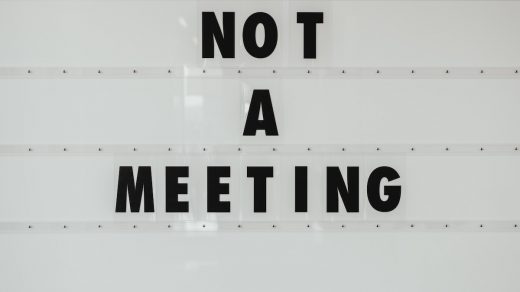Advocacy organizations use a wide variety of tactics and strategies to shape the political process. Almost everything, however, boils down to one of four different types of influence: relationships, information, money, and collective action. None of these are new, but recognizing broadly what types your organization uses can help quickly identify strengths and weaknesses. Elected officials may have other tools at their disposal but I am going to focus on outside advocacy organizations in this post. In a democratic society, collective action that implies broad public support or opposition are are typically the most powerful because it implies clear electoral consequences for policymakers. Of course, this is much more complicated in practice. The other three types of power can call make a difference under the right circumstances.
Relationships
The most straightforward political resource is relationships held with key decision makers. If you’ve had several meetings with the staff member of an elected official and built enough trust that they will meet with you or join a phone call when you ask, it’s fair to say you have a relationship with that office. Getting a meeting with a decision maker does not guarantee a vote for your cause, but you are much more likely to convince someone that you can have a conversation with. The other forms of political power discussed below including information, money, and collective action can help you build relationships as each offers decision-makers something they need.
To the extent that you or your organization has developed relationships with individuals in powerful roles it increases your political influence. Effective advocates build relationships strategically over time with allies inside and outside of government. Examples include policymakers who lead key committees, partner organizations with complementary strengths, reporters with large followings, or individuals with broad social media reach to key audiences. You can draw on all of these ties to help change policy.
Of course, relationships have their limitations. Policymakers change, so if the ones you know lose their office, it may reduce your reach. Further, knowing someone will not, on its own, change the political calculations confronting them. You may ask the staffer of the city council member to support expanded development, but she may stick to the rent control policy with far more support among her constituents. Policy experts, donors, fellow party members, and constituents likely have relationships with the policymaker as well. You are almost never the only voice on an issue.
Finally, widespread frustration with our political process is partly directed at disparities in access to power. In other words, some people have a lot of relationships with decision makers and who has access rarely represents the country as a whole. Policymakers and those in their network disproportionately are older, whiter, wealthier, and have higher educational attainment than the general population. The views of these political elites often do not represent the broader public. Larry Bartels’ research demonstrates that Senators’ voting records tend to reflect the opinions of their most affluent constituencies. Even if you believe your cause is just and in the interest of less advantaged people, it is important to be aware of your role in the system.
Information and Expertise
Information is another form of political influence. Think tanks are the classic example of an organization that hires individuals who build knowledge and expertise about a particular policy challenges and propose solutions to those problems. In a country of over 360 million people, even seemingly straightforward policies can become very complex very quickly. Individuals and organizations who can understand and advise on what to do get called to testify at hearings, provide feedback on legislation, and serve as sources for reporters. Many advocacy organizations rely at least in part on some form of information or expertise. In some cases that information takes the form of knowledge about a key constituencies views.
Relying on expertise has benefits. Sharing information and ideas with policymakers can be a gateway to building relationships and increasing your or your organization’s influence. Particularly on smaller, less well known issues expertise can heavily influence policy formation. The endorsement of a credible organization can also help build support for legislation by sending a positive signal to others in the policy environment. Effective expert advocates can create pressure on policymakers by highlighting problems through social and traditional media. While digital tools have reduced the power of gatekeepers to determine what counts as a good or bad policy idea, they also allow policy experts to expand their individual influence. A so called “influencer” with several thousand or even several hundred followers can help shape the debate on some issues.
Knowledge and information, though, can only go so far. Where influential interest groups with significant resources or many members of the public strongly disagree, smart policy ideas rarely win. Sometimes this results from policy wonks lost in the details of an ideal solution and unable to explain it to anyone else. Other times, a good policy idea creates winners and losers, and the losers can mobilize effectively to stop momentum for change. Finally, what seems like a great idea to an academic or policy professional may not resonate with the vast majority of people. For example, economists can demonstrate how free trade leads to faster GDP growth, but for a community who sees a factory close in the face of international competition, the benefits are much less clear.
Money
Good ideas and convincing data also struggle to overcome financial interests. Here I’ll refer mostly to direct donations to political campaigns, but the same logic applies to the money required to finance advocacy organizations of all types. Running for elected office is typically very expensive. On average winning candidates for the house of representatives in 2016 spent $1.3 million. If you’re worried about money being too much a part of our political system, you are right to be right.
While in many cases it may not be a direct quid pro, technically saying “if you donate to my campaign, I’ll vote for your policy” is illegal, the influence of money works more subtly. Being able to donate to a campaign, particularly a large donation buys time with the candidate. This might literally be on the phone or at a fundraiser. Even if there is no implied promise to support a certain policy, donors have more time to build relationships and share ideas with decision makers. Individuals or organizations with significant resources can systematically give to candidates ensuring those running for office are more likely to agree with them. Alternatively, since there are caps on individual donations, organizations can spend much larger sums supporting an issue rather than a candidate in an electoral cycle. Apart from giving to candidates, well resources companies or individuals can give more to causes or organizations they like, supporting more relationship building, policy experts, and action around their preferred issues.
There are some obvious downsides for democracy. Candidates or organizations that support ideas popular among wealthy donors will tend to be better funded. Even without formal vote buying, this creates a system where better funded candidates tend to agree with the opinions of party donors and spend more time hearing those people out. Organizations that share perspectives with those donors will also have more capacity than everyone else. The many proposals for reforming elections and money in politics seek to root out at least some of these problems.
The influence of money can be overstated at times. It does not buy everything. The increasing willingness of Democratic Presidential contenders to shun large dollar fundraisers for online small donor donations signals that new digital tools may help overcome the influence of large dollar donations in elections. Further, some things are more important than money. Typically no amount of money will cause candidates to switch political parties. With some exceptions, core values or identity will often trump campaign contributions. Electoral interest matters as much or more. Few politicians will accept money that would hurt their election chances. In a democracy, votes beat even money.
Collective Action
Being able to turn out large numbers of people in support or opposition to a policy can be especially influential as it implies electoral consequences to an elected official. Money or information will often not advance a cause if there is significant public opposition on an issue. If your organization has the power to drive “get out the vote” efforts it can have a powerful influence over who gets elected, and the policy agenda of elected officials who seek your endorsement. It’s not just about knocking on doors. This includes getting people to take action through rallies, calling elected officials and so on.
Taking action finds its strength in numbers. A lone dissident or call to a representative has little impact. Make a couple hundred call to an elected official and they will surmise that a far broader slice of the electorate cares about an issue. Politicians explicitly connect these views with votes. If a lot of their constituents feel a particular way, it may threaten reelection or at a minimum, suggests someone representing their constituents should take this perspective into account.
The intensity of the action also matters. Although digital action can be effective at times, a call or meeting is typically worth much more than an email or tweet. The more effort it takes to perform something the more it signals to everyone else how important it is to those doing the action. Showing up at a rally or protest demonstrates more passion for an issue than calling a member of Congress, civil disobedience communicates that even more critical interests are at stake [note below].
The main challenge to deploying these kinds of tactics is that it takes a lot of time and resources to build the power for coordinated action. While having money to purchase digital ads can earn you followers, lots of emails or tweets have their limitations. Organizing coordinated action with a lot of people, even on a small scale at your city council takes time, relationship building, and careful planning. Other people may not be as interested in the issue if they do not see a direct impact in their daily lives. On a national level, even effective collective action faces significant limits. In a world of sharp polarization and a relatively small cadre of swing voters, few members of Congress have much incentive to change their views. As long as they stick with the party line, they are likely to get reelected no matter how many calls they receive from angry constituents.
Conclusion
The last challenge is less of an issue with collective action and demonstrates the limits of any kind of political influence in a highly polarized environment. Money, information, and relationships all matter less where policymaker incentives are to stick with the party line. Where there is room to make a difference, developing expertise and relationships provide a relatively low-cost way to influence decisions, but on their own can have a hard time overcoming well resourced interests or popular opinions. Money matters if you can amass it, but as others articulate better elsewhere, can harm our political systems and does not buy everything. If you have the time and resources, building a movement for collective action can make the biggest difference of all, but is much easier said than done.
Note: Arguably some forms of protest or direct action may occupy a separate category. Calls, lobby visits, and rallies suggesting working through the electoral system to make change. Protest or in particular, direct action, may communicate that a minority that cannot win numerically is using other means to persuade fellow citizens.



Thank you from the bottom of my heart for everything
Sure thing! Thanks for the kind words!